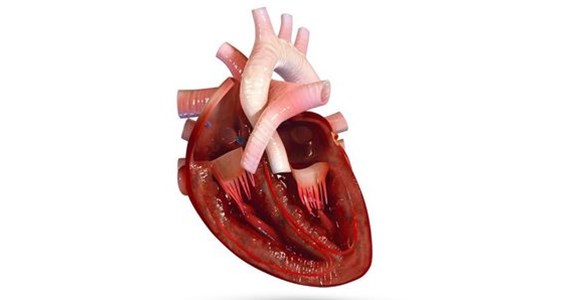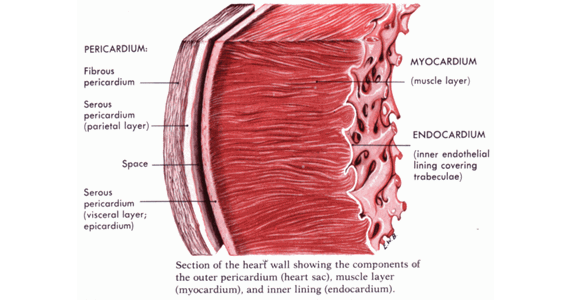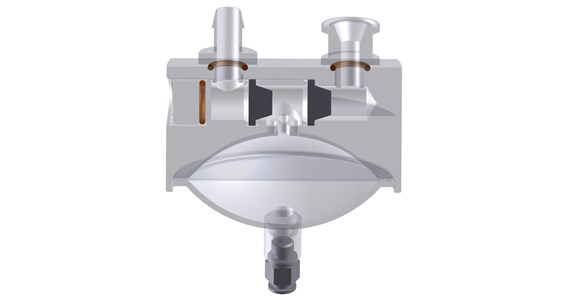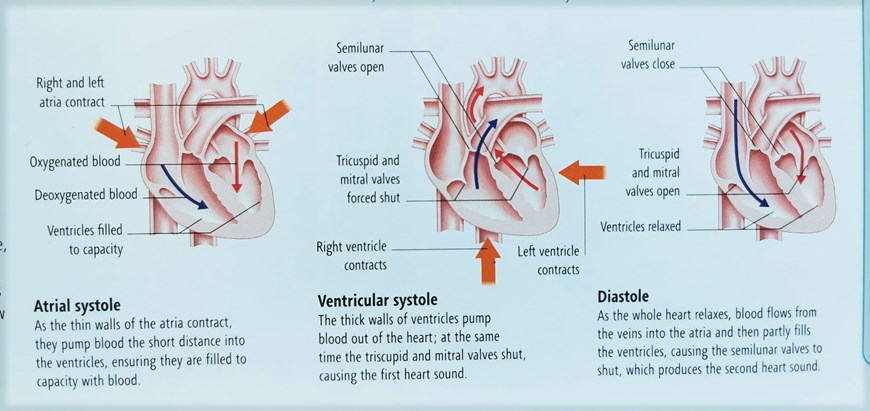The mammalian heart inspires the Clio Single-Use-Pump
Concept
The mammalian heart is a dynamic, untiring, precisely adjustable four chamber dual pump arranged in one compact unit. Lifetime ranging up to 2.5 billion (2.5x109) pump strokes for humans. The heart has 4 valves, 2 inlet chambers and 2 power chambers. The 2 inlet chambers Atrium supply via 2 one-way valves Tricuspid, Mitral the power chambers Ventricles with fluid. The two Ventricle muscle walls Myocardium contracts and force blood through the 2 one-way valves Pulmonary, Aortic out of the heart and into the body.
The total volume of blood pumped by the average animal mammalian heart in a lifetime is approximately 200 million liter/kg/heart. The obtainable / realistic number of heart beats is ranging 1-2.5 billion (1-2.5 x109) per lifetime - yes, all depending on how lucky we are!
The driving force of the heart is the powerful muscle wall named Myocardium. App 1% of the Myocardium wall are pacemaker cells reacting instantly to the PID regulated nerve signal combined from Sinoatrial Node and Medulla in the brain. The nerve signal range as high as 60 milliVolt strength based on the Calcium, Potassium, Sodium ions balance. Myocardium is covered on the outside by the fluid tight and protective diaphragm Pericardium.
Mammalian heart comparison - (CO = BpM x SV) – corrections welcome
|
|
Beats-per-Minute |
Stroke Volume |
Cardiac Output |
Blod volume |
Max pressure |
Heart weight |
Body weigth |
Beat life time |
|
Abbreviation |
BpM |
SV |
CO |
|
mmHgx1,3 |
|
|
|
|
Measures |
|
Liter |
L/minute |
Liter |
mBar |
Kilo |
Ton |
x109 |
|
Adult human |
60-150 |
0.060-0.090 |
4-14 |
4-6 |
160 |
0.25-0.35 |
0.08 |
2.5 |
|
Horse |
30-100 |
1-3 |
30-300 |
40-60 |
150 |
3-6 |
0.4-0.8 |
+1.1 |
|
Elephant |
25-50 |
12 |
300-600 |
300-450 |
200 |
12-21 |
5-6 |
+1.1 |
|
Blue whale |
6-30 |
>350 |
>2,100 |
<6,500 |
|
400-700 |
100-180 |
+1.1 |
Conclusion - mammalian heart max variation in Cardiac Output (CO) = 1:10
- Beats-per-Minute (BpM) variation: 1:3
- Stroke Volume (SV) variation: 1:3
The Clio pump integrates only three moving parts (inside the pump body):
- one Pericardium diaphragm as found on the outside of the Myocardium muscle
- two one-way valves like Tricuspid and Pulmonary
The Clotho and Lachesis controller integrates the electronic Apollon brain, which collects electrical signals from the Laser sensor and pressure and vacuum sensors. Hereby the Apollon brain can calculate on-line:
- the actual position of the Pericardium membrane with 1/10th of a millimetre
And correct the diaphragm position instantly according to the programme position by regulating the drive gas pressure and:
- use vacuum to contract Pericardium
- use pressure to expand Pericardium
One side of the Pericardium diaphragm is in contact with sterile fluid and the other side in contact with the non-sterile drive gas pressure. Pericardium material is a medical grade silicone diaphragm/wall.




